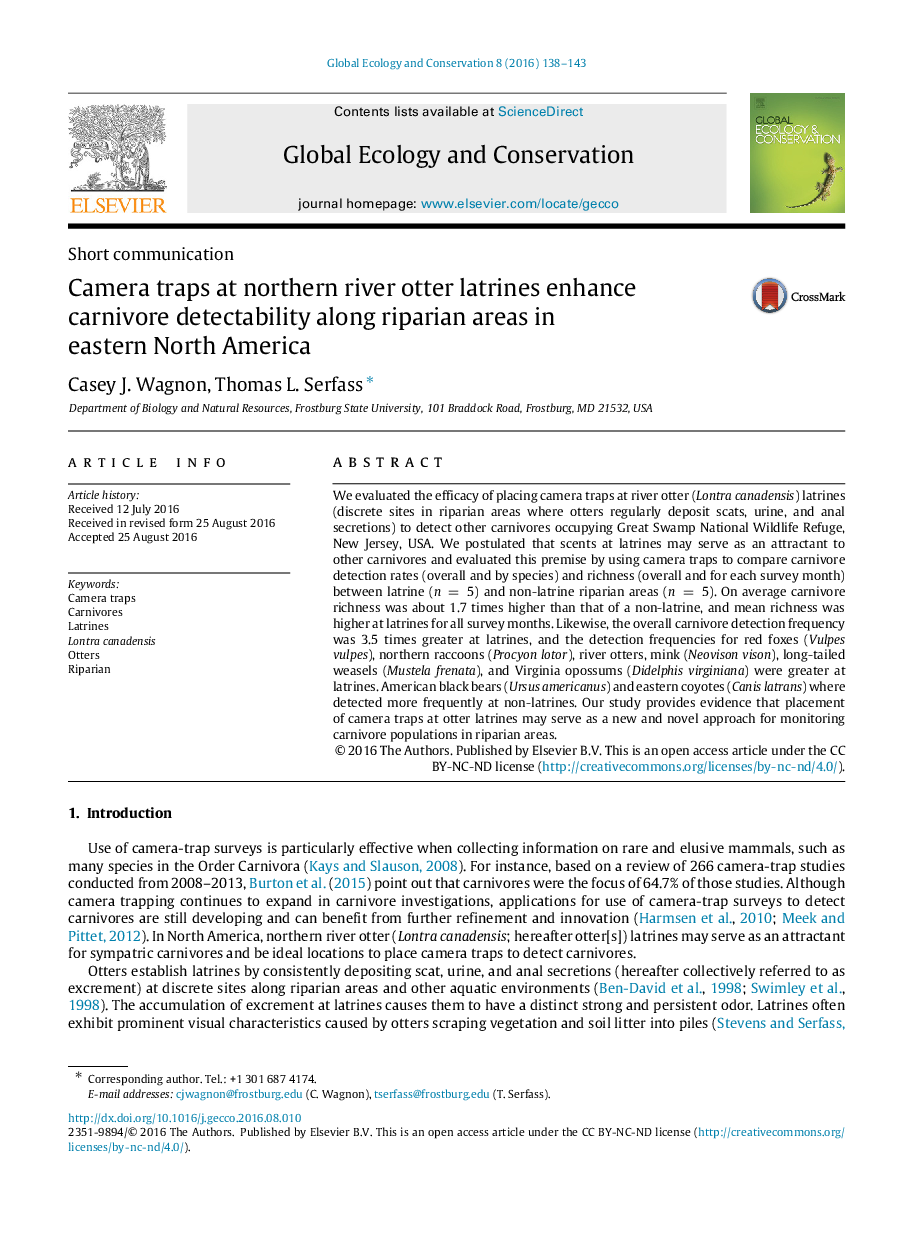| Article ID | Journal | Published Year | Pages | File Type |
|---|---|---|---|---|
| 4379440 | Global Ecology and Conservation | 2016 | 6 Pages |
We evaluated the efficacy of placing camera traps at river otter (Lontra canadensis ) latrines (discrete sites in riparian areas where otters regularly deposit scats, urine, and anal secretions) to detect other carnivores occupying Great Swamp National Wildlife Refuge, New Jersey, USA. We postulated that scents at latrines may serve as an attractant to other carnivores and evaluated this premise by using camera traps to compare carnivore detection rates (overall and by species) and richness (overall and for each survey month) between latrine (n=5n=5) and non-latrine riparian areas (n=5n=5). On average carnivore richness was about 1.7 times higher than that of a non-latrine, and mean richness was higher at latrines for all survey months. Likewise, the overall carnivore detection frequency was 3.5 times greater at latrines, and the detection frequencies for red foxes (Vulpes vulpes), northern raccoons (Procyon lotor), river otters, mink (Neovison vison), long-tailed weasels (Mustela frenata), and Virginia opossums (Didelphis virginiana) were greater at latrines. American black bears (Ursus americanus) and eastern coyotes (Canis latrans) where detected more frequently at non-latrines. Our study provides evidence that placement of camera traps at otter latrines may serve as a new and novel approach for monitoring carnivore populations in riparian areas.
